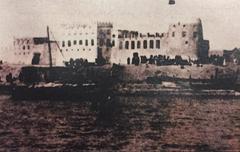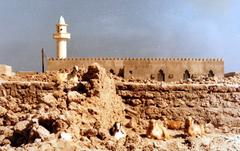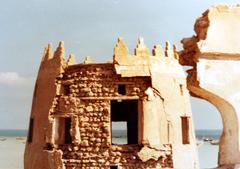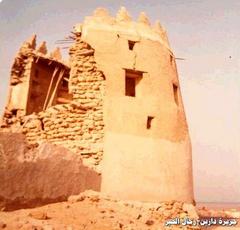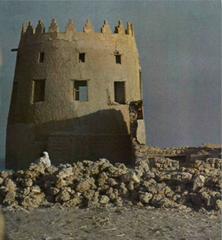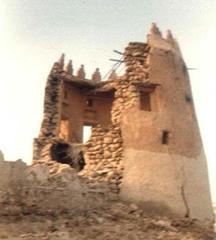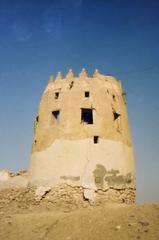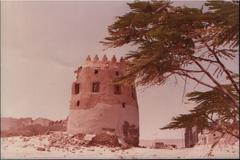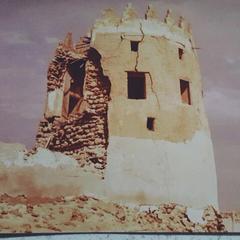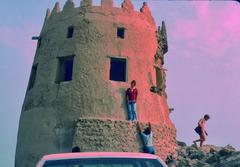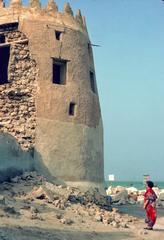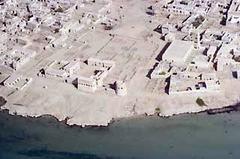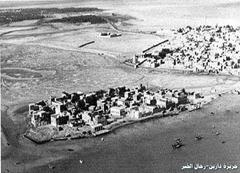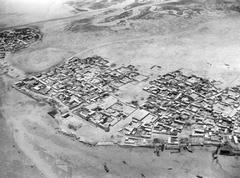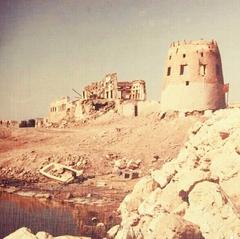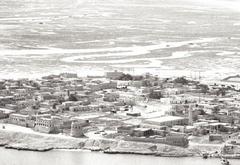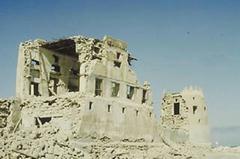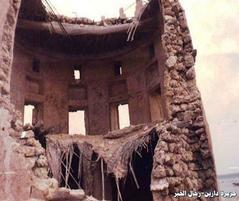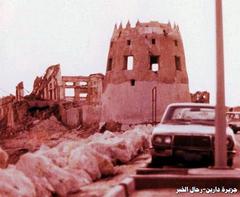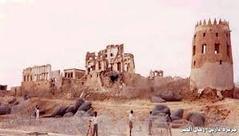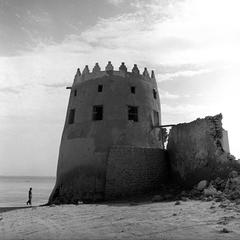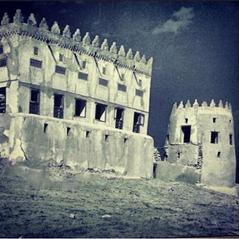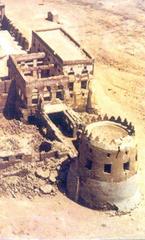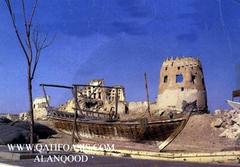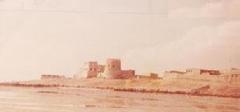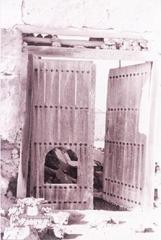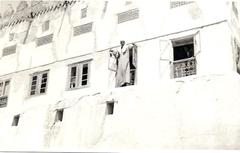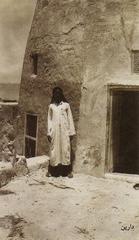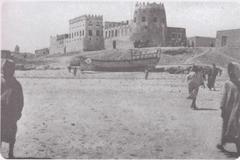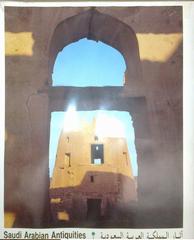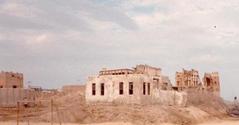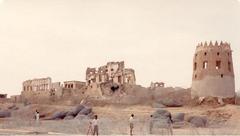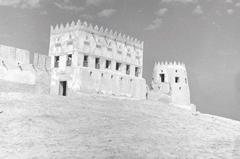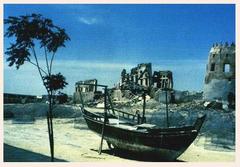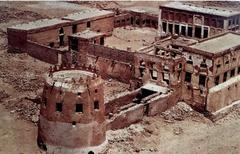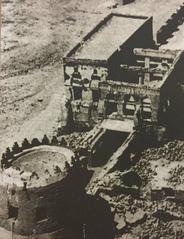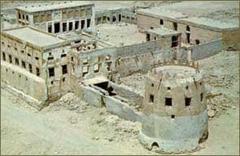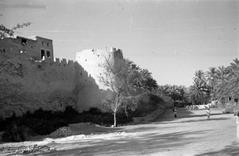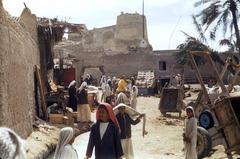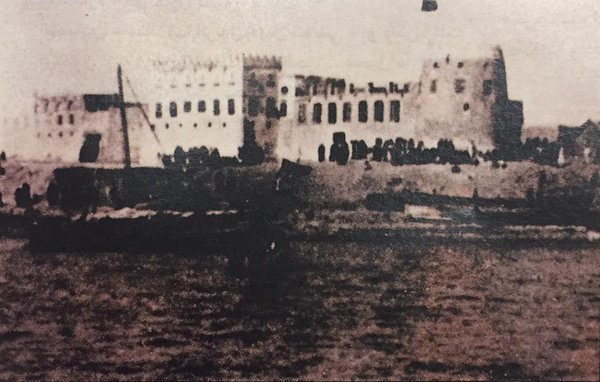
Al Faihani Palace Visiting Hours, Tickets, and Travel Guide – Qatif Governorate, Saudi Arabia
Date: 14/06/2025
Introduction: Timeless Heritage on Tarout Island
Al Faihani Palace, located on Tarout Island in the heart of Qatif Governorate, Eastern Province, Saudi Arabia, is a historic landmark that embodies the region’s rich heritage and centuries-old traditions. This guide offers detailed information for visitors—covering opening hours, ticketing, accessibility, travel tips, and the palace’s historical, architectural, and cultural significance. Whether you’re a history enthusiast, architecture lover, or cultural explorer, Al Faihani Palace provides an authentic window into one of the Arabian Peninsula’s oldest continuously inhabited areas (Wikipedia).
Historical Background
Origins and Early Use
The origins of Al Faihani Palace trace back to the late 18th and early 19th centuries, amidst the era of the First and Second Saudi States (1797–1871 CE). Built adjacent to the historic Darin Castle in the village of Darin, the palace served as a defensive stronghold and customs center, capitalizing on Tarout Island’s strategic maritime location in the Persian Gulf (Wikipedia).
Restoration and Legacy
The palace was restored and given its current name after Muhammad bin Abdul Wahhab Al Faihani’s stewardship in 1884–1885. Al Faihani, who migrated from Qatar after the Ghariyah War, was granted the palace by Saudi rulers in recognition of political alliance and support. This event marked the integration of influential Gulf families like Al Bu Ayninin, Al Faihani, and Al Harun into the region, fostering the development of the East Darin neighborhood and reinforcing the palace’s importance as a symbol of hospitality and regional governance (Wikipedia).
Political and Social Role
More than a residence, Al Faihani Palace functioned as a hub for governance, diplomacy, and commerce, reflecting Qatif’s longstanding role as a center for trade and cultural exchange. Its proximity to Darin Castle solidified its position as an administrative nucleus on Tarout Island.
Architectural and Archaeological Significance
Distinctive Features
Al Faihani Palace exemplifies the region’s late Islamic architectural traditions, featuring thick mud-brick walls, arched doorways, decorative plasterwork, and screened courtyards. The design incorporates both indigenous Arabian and broader Islamic influences, optimized for privacy, ventilation, and the coastal climate (Archiqoo; INJARCH).
Archaeological Context
Tarout Island is renowned for its archaeological wealth, with evidence of human settlement dating back to 5000 BCE. Al Faihani Palace and Darin Castle contribute to a landscape rich in ancient temples, trading outposts, and historic residences—reflecting the island’s role as a cultural crossroads between Mesopotamian, Persian, and Arabian civilizations (UN-Habitat; WildTrips).
Regional Excavations
Qatif Governorate is part of a region with over 8,700 identified archaeological sites. Artifacts found at Al Faihani Palace include ceramic and glass fragments dating to the Islamic Golden Age, foundation remnants indicating multiple construction phases, and elements of ancient water management systems (Saudipedia).
Cultural Importance
Symbol of Migration, Integration, and Identity
Al Faihani Palace’s story is deeply intertwined with the migration of Gulf families and the integration of diverse communities in Eastern Arabia. The palace stands as a symbol of hospitality, regional resilience, and cultural exchange, celebrated in Qatif’s collective memory through oral histories and local events (KSA Journeys).
Heritage Preservation Challenges
Despite its historical significance, the palace has suffered from neglect and urban development, highlighting the broader challenges of heritage conservation in Saudi Arabia. Recent restoration and documentation initiatives underscore the need to protect such cultural treasures for future generations (Wikipedia).
Visiting Al Faihani Palace: Practical Information
Opening Hours and Tickets
- Hours: Saturday to Thursday, 8:00 AM – 5:00 PM; closed Fridays and public holidays. Hours may vary due to restoration—confirm with local tourism offices before your visit.
- Tickets: Entry is generally free, but guided tours or special exhibitions may require a nominal fee. Carry valid identification (passport or national ID) for security checks.
Accessibility
- The palace’s historic layout presents some mobility challenges, but certain areas are accessible via ramps or designated pathways.
- Contact local tourism authorities in advance for details about wheelchair access or special support services.
Guided Tours
- Guided tours, available through the Qatif tourism office and local operators, provide insights into the palace’s history and architecture.
- Tours are typically offered in Arabic and English. Advance booking is recommended due to group size limits and conservation protocols.
Visitor Facilities
- Basic amenities such as restrooms and shaded seating are available near the entrance.
- For dining, nearby traditional souqs and local restaurants offer authentic Gulf cuisine, including seafood and dates (Leaders MENA).
- Bring bottled water, as on-site food options may be limited.
Dress Code and Etiquette
- Men should wear long trousers and sleeved shirts; women are expected to wear an abaya and cover their hair with a scarf.
- Comfortable footwear is advisable due to uneven stone pathways.
- Photography is allowed in outdoor areas; always ask permission before photographing people or sensitive interiors.
- Maintain respectful behavior, especially during prayer times.
Safety
- The palace and Qatif are safe for tourists, with security personnel present at major sites.
- Standard precautions apply: safeguard personal belongings and comply with posted guidelines.
Travel Tips and Getting There
- By Car: Qatif is about 30 km from Dammam and easily accessible by road. King Fahd International Airport (DMM) is approximately 45 km away.
- Local Transport: Taxis and ride-hailing services like Careem and Uber are widely available.
- Best Visiting Season: October to March, with comfortable temperatures (15–28°C); avoid the peak summer heat.
Nearby Attractions
- Darin Castle: Historic fortress adjacent to the palace, essential for understanding the island’s defensive history.
- Qatif Old Souq: Traditional marketplace ideal for crafts and local delicacies.
- Tarout Island Archaeological Sites: Sites of ancient temples and settlements.
- Qatif Fish Market: Experience local maritime traditions (Leaders MENA).
- Palm Groves: Scenic spots for walks and photography.
Frequently Asked Questions (FAQs)
Q: What are the official visiting hours?
A: Saturday to Thursday, 8:00 AM–5:00 PM. Hours may change due to restoration; confirm locally.
Q: Is there an entry fee?
A: Entry is generally free; guided tours or exhibitions may require a small fee.
Q: Are tours available?
A: Yes, in Arabic and English. Book in advance for the best experience.
Q: Is the palace accessible for visitors with mobility challenges?
A: Some areas are accessible with ramps; contact tourism authorities for details.
Q: Can I take photographs?
A: Outdoor photography is permitted. Request permission for interiors or of people.
Responsible Tourism and Preservation
Support heritage conservation by respecting site boundaries, avoiding littering, and booking with responsible tour providers. Purchasing local crafts helps sustain artisans and traditions.
Emergency Contacts
- Emergency services: 999 (police)
- Tourism information: Saudi Ministry of Tourism
- Keep important documents and contact information accessible.
Summary and Call to Action
Al Faihani Palace is a vital testament to Qatif’s diverse and enduring heritage, reflecting centuries of migration, trade, and cultural synthesis. Its blend of Islamic, Persian, and Arabian influences makes it a must-visit for anyone seeking to understand the Eastern Province’s history. Plan your visit, respect local customs, and engage with preservation efforts to ensure this landmark endures for future generations. For the latest updates, visitor information, and travel tips, download the Audiala app and consult official tourism resources.
References
- Wikipedia: Muhammad bin Abdul Wahhab Al Faihani Palace
- Archiqoo: Faihani Palace
- UN-Habitat: Qatif Historical Sites
- INJARCH: Al Qatif Architectural Heritage
- Saudipedia: Archaeological Excavations
- Trek Zone: Qatif Historical Attractions
- Leaders MENA: Discovering Al Qatif
- WildTrips: Qatif Travel Guide
- Saudi Ministry of Tourism
- Audiala app
